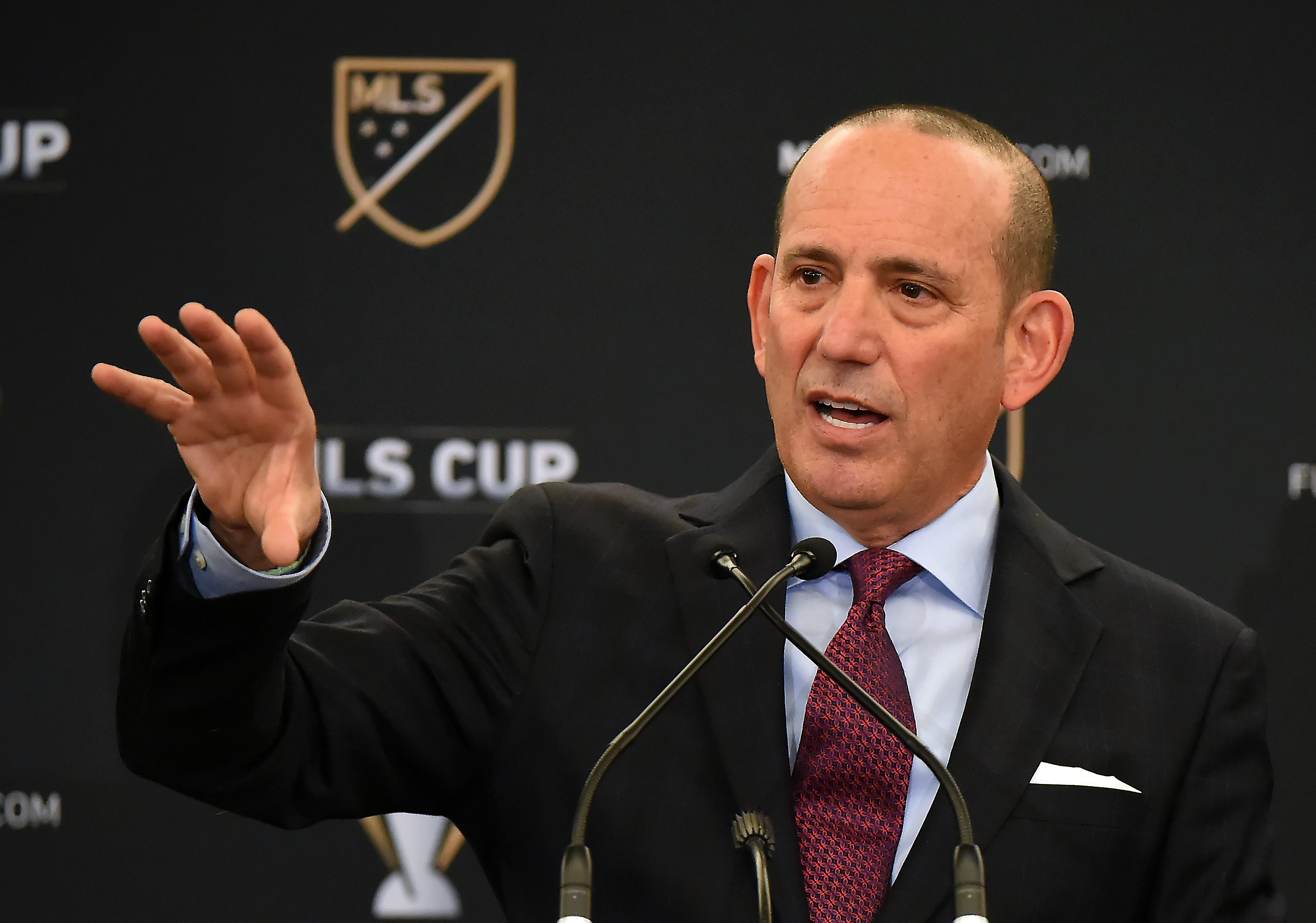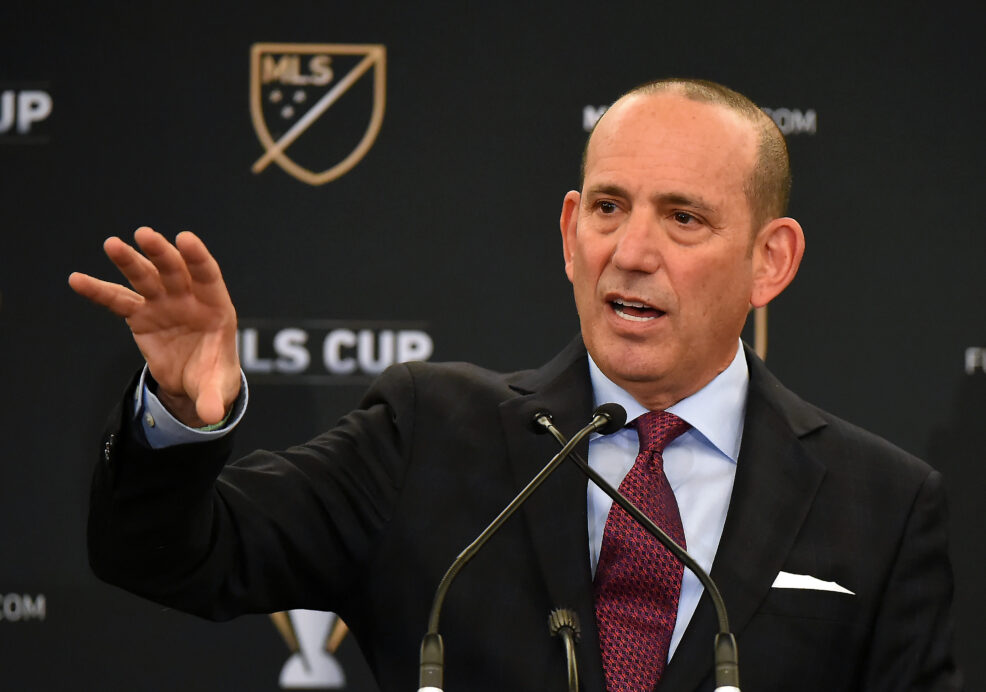
MLS said in 2013 that it planned to expand to 24 clubs by the end of the decade. Well, that figure has just increased by two.
The league announced late on Thursday specific details with regards to further expansion, including targeted goals of growing to 26 teams by 2020 and to 28 teams by an unannounced date. MLS will move to 22 clubs starting next year with the arrivals of Atlanta United and Minnesota United, 23 in 2018 after LAFC enters the league, and is waiting for Miami to become its 24th team.
The 25th and 26th clubs will be decided upon by the third quarter of 2017 and their expansion fees will be $150 million. Those two sides, as well as the two others, will be chosen out of a list of 10 prospective markets: Charlotte, Cincinnati, Detroit, Nashville, Raleigh/Durham, Sacramento, St. Louis, San Antonio, San Diego and Tampa/St. Petersburg.
Sacramento has long appeared to be one of the favorites to win one of the expansion bids, but MLS commissioner Don Garber said Thursday that Republic FC would have to go through the same bidding process as everyone else.
MLS is looking for three key aspects that it will consider when looking at possible expansion candidates.
The first criteria is a committed local ownership group that has a passion for the sport, a deep belief in MLS, and the resources to invest in the infrastructure that can build the sport in its respective market.
Second is that the market has a history of strong fan support for soccer matches and other sporting events, is located in a desirable geographic location, and is attractive to corporate sponsors and television partners.
Finally, the league will look at a comprehensive stadium plan that ensures the club will have a proper home for its fans and players while also serving as a destination for the sport in the community.


I’d be disappointed if Sacramento didn’t get a team. None of the other potential cities seem to have an appreciably larger TV market, so I’d be in favor of going for the one that seems to have built a strong fan base for the longest time (Cincinnati may have a larger fan base based on their remarkable attendance average in their first USL season this year).
At least the whiners have moved on to artificial playing surfaces.
MLS is here to stay, realize that most of the whiners on these pages said it wouldn’t be 20 years ago, 15 years ago, 10 years ago, as they tell you of Ponzi schemes, etc. They were wrong before, they are wrong now.
It is good to see that places that want a team and are viable will probably end up with one. I would like to see him say 30 teams right off the bat, but it is probably a strategy to get the most out of the investors rolling out a few teams at a time. I have no problem with that. Many of the teams, and owners, that paves the way deserve to be compensated. There is very little risk now if the fee is really low. Risk taken by old team should be compensated for and thus dispersed to the new teams.
MLS is where it is thanks to our criticism. We are critical, and we are fans, who care about the league and want it to improve.
Maybe they can put a team in Chicago.
Rumor is that the Ricketts may buy the Fire.
There’s also the competition factor. Are there that many quality players to fill these rosters without quality dropping off significantly?
side note – RDU is a much choice for MLS than Charlotte btw.
I have been making that argument as well. Yes, you could import talent from abroad, but you will have to do a lot more of that.
Considering MLS is no a top 10 league, there are plenty of room for improvement for MLS to get better players. These players are going to cost money, which expansion will bring and help sustain. There is also the investment back in MLS academies, which will be relied much more heavily for players in the not so distant future.
The talent pool is not going to come from the US. Futbol has a global talent pool to choose from with each league. There are variables of competition; league competition, team competition, pay competition, and quality of life competition.
The quality of life is what the MLS is and will continue to draw on to attract talent from abroad to pull from equal or greater then leagues. Green cards, ability to own property, and stability interest players and there family.
However, pay or price is what dictates all markets. What you are willing to pay is what sets the market value for a player. MLS with all its salary controls and franchise fees is a protection and future checks and balances for financial stability.
Remember the MLS is run by folks who created the NFL pay structure and built an extremely profitable league and that is a positive
Many players will come from abroad, but the teams are mandated to have mostly domestic players on their rosters. Hence the reason youth development will be a major factor in how good the on-field product is in MLS.
The foreign market as said but bigger picture the more academies in theory the more quality players will be developed in the long run.
If Sacramento gets jobbed I quit MLS
I think Sacto is part of an underlying theme of creating regional fandom and competition directly with adjacent clubs. The Cascadia rivalries are the thesis for success and draw on city loyalty versus neighboring cities. TV markets and advertising overlap as well.
I agree with regional rivalries. I enjoy from afar the Seattle/Portland/Vancouver rivalries. I’m here in Sacramento and already hate San Jose (albeit I was a San Jose Earthquakes fan from the old NASL/MISL days…anyone remember Golden Bay Eathquakes?)
Agreed on the local competition angle. That model closer to the college football comparison is the long term growth of the sport. Not the Ibra to Beckams Miami model. Three 10 team divisions home and away and singles would work. Then the marketing teams could play up the local distinctions..
What happens when expansion stops? Will MLS be really in the red as they will lose a revenue stream. Didn’t some guy claim MLS was a pyramid scheme propped up by expansion fees?
I don’t think its a pyramid scheme, but it is clear that MLS is going to have trouble taking itself to the higher echelons of the sport without much, much better tv ratings and resulting contracts. MLS is not going to get or stay rich by working the player transfer market anytime soon. The truth is that MLS is still in infancy mode — can you imagine if Europe, which is roughly the same size/population as the US/Canada market, only had two dozen first division teams and no meaningful second or third divisions?
It’s not a pyramid scheme by definition given that Forbes values new franchises above what the franchise fees were. When your wealth is appreciating simply by existing, you’re doing pretty well actually
RE: TV ratings. Atlanta United could be a big help if they can do for MLS what the Braves did for MLB. That’s why they got in before Sacramento
Yeah there’s the “Soccernomics” guy Stefan Szymanski who has said MLS is a pyramid scheme. His point really is more that MLS shouldn’t be under the illusion it’ll ever be wildly profitable. Most clubs around the world aren’t and are really just the vanity project of already billionaires. Whats more important is the perceived value of clubs continue to go up. In other words how many billionaires want to own a sports team in a major US city.
That guy is an idiot, his premises were all wrong and they lead to wrong conclusions.
Who cares what the rest of the world is like. MLS just had two teams playing for the Cup that had never before, after seeing two very small attended teams have great seasons, long with NY teams.
Completely different that any other league in the world.
It will be very successful and is well on the way to that.
Quit, until you write a rigorous book presenting your argument to the public, I think you should stop dismissing others so wilfully. You sound ignorant, which you probably are.
MLS is here, it’s a fine league, but there are a lot of interesting things happening outside the US too. Pay attention at least.
Whats concerning about this and what the soccernomics guy has said is that this is the exact same way that the old NASL of the 70s and early 80s funded itself as well. That league looked to be doing great right up until the 82-82 season and then once they expanded to most major markets it all stopped and cratered in on itself. I think all of are hoping MLS can find a way to get through this and hoping the ghosts of the old NASL don’t haunt us in the future.
Szymanski absolutely went off the deep end with this argument. MLS is nothing like NASL — and not just in terms of single-entity. NASL was adding 3 teams while losing one team one year and then adding 1 team while losing another the next and then adding four while losing two the year after. The relative stability of MLS compared to NASL tells you everything you need to know about the long term prospects of the two different leagues.
He was also wrong in thinking that MLS doesn’t have the potential to be a huge revenue generator — even after the media bubble bursts. You would think an economist would understand value a little bit better than just looking at balance sheets, which don’t even begin to tell the entire story when it comes to professional sports franchises.
Like Don Lamb almost said, the guy is an idiot. OLD NASL and MLS could not be more different.
The dynamics could not be more different. Soccer is not only accepted by today’s youth, it is revered, completely different than when I was a kid.
I really doubt he is an economist. If he is, he is a bad one.
Like everyone is saying, MLS isn’t the old NASL. The new NASL is the old NASL. You can disagree with MLS’ philosophy all you want, but Don knows what he’s doing and we’re lucky to have him despite his faults (everybody has them)
Nashville wants one, but if we dont. I live 1hour 30 mins to Atlanta so its all good.
So you will be a season ticket holder?
Perhaps the playing surface must be grass. No more artificial turf.
There are no MLS clubs in London and Mexico City. Those seem like logical choices for expansion.
They’ll be able to play in the new NFL stadiums there! Perfect!!
;()#=#=#
that’s a barf emoji if anyone’s asking…
You mean Twickenham, Wembley and Azteca! LOL, I’m sure they’ll be happy to find that out.
all sarcasm aside, Mexicali could work in MLS. The mexican federation wouldn’t oppose since soccer has never taken off in that city.